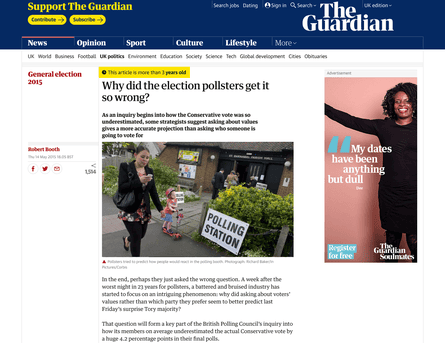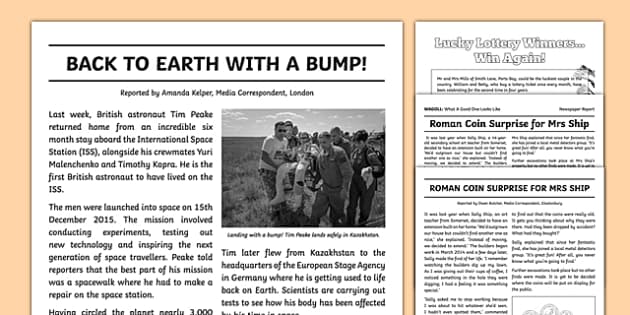Some Known Factual Statements About News Articles
Table of ContentsThe Only Guide to News ArticlesNews Articles Fundamentals ExplainedThe 5-Minute Rule for News ArticlesNews Articles Can Be Fun For AnyoneThe News Articles Statements
Excellent expertise of different subjects offers students an one-upmanship over their peers. Even though digital and social media sites are conveniently easily accessible, we should not neglect exactly how important it is to read the papers. Parents should attempt and inculcate the practice of checking out a newspaper as an everyday regimen to continue the heritage of the adored print medium.Newspaper article additionally have a minimum of among the following vital attributes about the desired target market: proximity, prestige, timeliness, human rate of interest, quirk, or effect. The associated term journalese is in some cases used, typically pejoratively, to refer to news-style writing. One more is headlinese. Papers usually follow an expository writing style.
Within these limitations, newspaper article likewise intend to be comprehensive. Other elements are entailed, some stylistic and some derived from the media kind. Among the bigger and a lot more respected newspapers, fairness and equilibrium is a major consider presenting details. Commentary is generally restricted to a different section, though each paper might have a various total slant.
Papers with a worldwide target market, for instance, tend to make use of an extra formal design of composing. News Articles.; typical design overviews consist of the and the US Information Style Book.
The Ultimate Guide To News Articles
As a regulation, reporters will not utilize a lengthy word when a short one will certainly do. News writers try to avoid using the same word extra than when in a paragraph (in some cases called an "resemble" or "word mirror").
Nevertheless, headings in some cases omit the topic (e.g., "Leaps From Watercraft, Catches in Wheel") or verb (e.g., "Pet cat lady fortunate"). A subhead (also subhed, sub-headline, subheading, caption, deck or dek) can be either a subordinate title under the main headline, or the heading of a subsection of the article. It is a heading that comes before the major message, or a group of paragraphs of the primary message.

Extra signboards of any of these kinds might show up later on in the write-up (particularly on succeeding pages) to attract further reading. Such signboards are likewise made use of as guidelines to the short article in various other sections of the magazine or site, or as advertisements for the piece in other publication or websites. Normal structure with title, lead paragraph (summary in strong), other paragraphs (information) and contact details.

Instance of a hard-lead paragraph NASA is recommending an additional area job. The budget demands roughly $10 billion for the project.
The NASA announcement came as the company asked for $10 billion of appropriations for the job. An "off-lead" is the second crucial front page information of the day. The off-lead appears either in the top left edge, or directly listed below the lead on the right. To "bury the lead" is to start the write-up with history information or details of secondary relevance to the readers, compeling them to learn more deeply into a post than they should need to in order to find the necessary factors.
The Definitive Guide to News Articles
Typical use is that or two sentences each create their own paragraph. Journalists normally define the organization or structure Recommended Site of a newspaper article as an upside down pyramid. The crucial and most intriguing aspects of a story are put article source at the start, with supporting information adhering to in order of reducing importance.
It enables individuals to check out a subject to just the deepness that their curiosity takes them, and without the charge of information or subtleties that they could consider unimportant, but still making that info readily available to extra interested viewers. The inverted pyramid structure likewise allows write-ups to be cut to any kind of arbitrary size throughout design, to suit the area available.
Some writers begin their tales with the "1-2-3 lead", yet there are lots of sort of lead available. This style invariably begins with a "5 Ws" opening up paragraph (as explained above), followed by an indirect quote that offers to sustain a significant element of the first paragraph, and afterwards a direct quote to sustain the indirect quote. [] A kicker can refer to numerous things: The last tale current broadcast; a "pleased" story to end the show.
Longer posts, such as publication cover articles and the pieces that lead the within sections of a paper, are known as. Function tales differ from straight news in a number of ways.
The Buzz on News Articles
The reporter frequently information communications with interview topics, making the piece more personal. An attribute's first paragraphs commonly associate a fascinating moment or event, as in an "anecdotal lead". From the particulars of an individual or episode, its sight promptly widens to generalities concerning the tale's subject. The area that signifies what a function has to do with is called the or billboard.

The Editor's Toolbox: A Referral Overview for Beginners and Professionals (2001) useful site Allan M. Siegal and William G. Connolly. The New York Times Handbook of Style and Use: The Authorities Design Overview Used by the Writers and Editors of the World's Most Authoritative Paper (2002) M. L. Stein, Susan Paterno, and R.